This article covers all the basic to intermediate concepts and features of Tableau from scratch. This is the perfect article for you if you are an absolute beginner in Tableau.
Our goal as Data Analysts is to get the insights from our data in such a way that everybody who sees them can easily understand their implications and how to act on them.
Tableau is a data analytics and visualization tool. It’s the leading (33% market share followed by Power-BI) data analytics and visualization tool in the market. Tableau comes with a very easy drag-drop interface which makes it easy to learn and you can work on almost every type of data in Tableau.
This makes it an excellent choice for data analysts.
This article will give you a walkthrough of all essential features of the Tableau, which you must know in order to work on it:
Tableau provides us various services according to our business need Tableau Desktop, Tableau Public, and Tableau Online, all these offer Data Visual Creation. Choice of Tableau depends upon the type of work.

Tableau Desktop is a program that allows you to execute complicated data analysis tasks and generate dynamic, interactive representations to explain the results. Tableau also lets you share your analysis and visualizations with the rest of your company, allowing everyone from coworkers to top management to look into the data that matters to them.
Before you can begin using Tableau, you need to download the Tableau setup from the link and then accept all the licenses and agreements. After installation, you will get a home screen same as the given picture below.
After installation, if you find this Homescreen you are good to go:
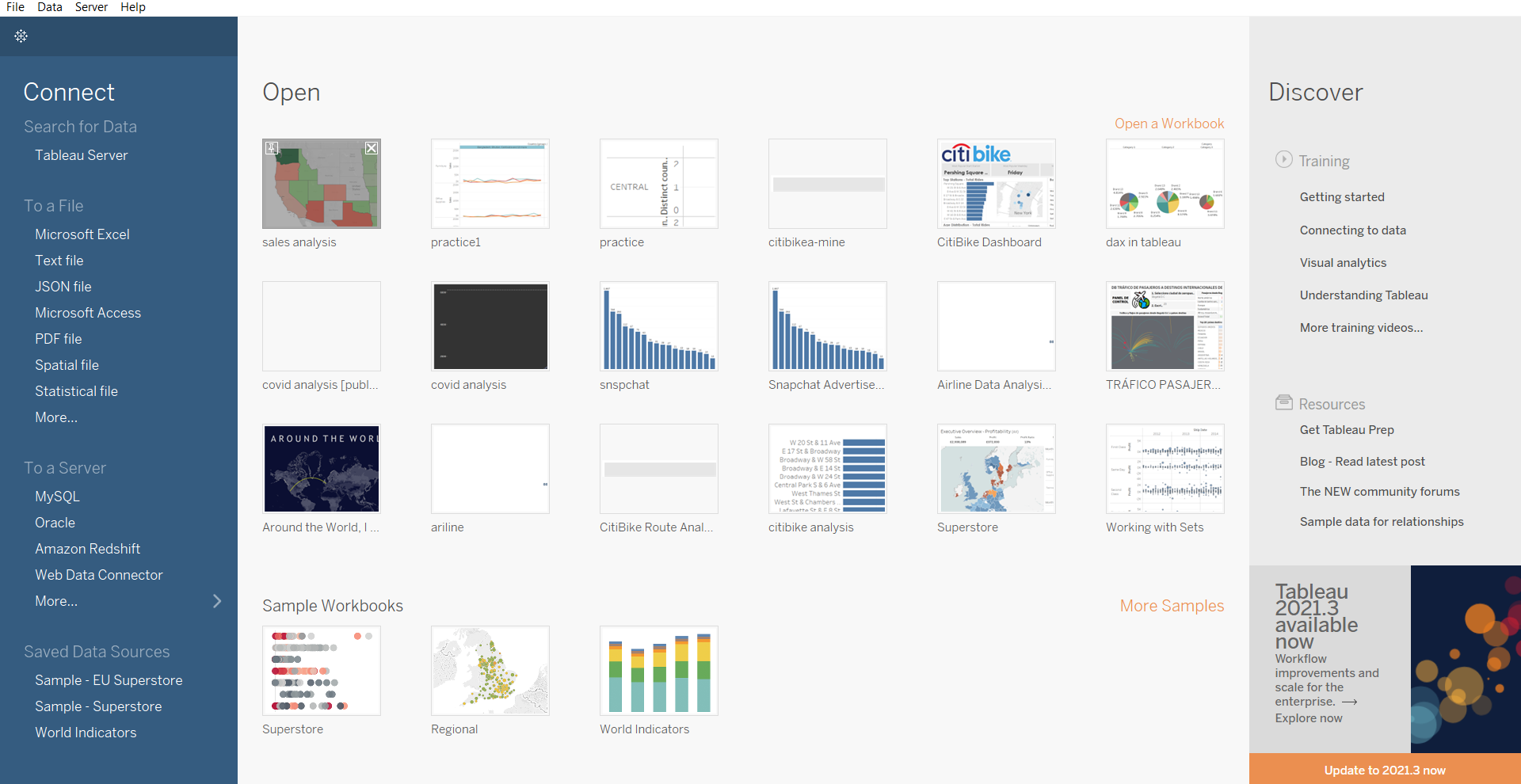
Once you have installed Tableau in the system, let’s start with some real-world Data Visualization using Tableau.
We will be using global superstore data throughout the article, which is perfect for learning purposes. This link will take you to a page where you may download the dataset. The downloaded file is a zip file that contains an excel that looks like the given picture below:
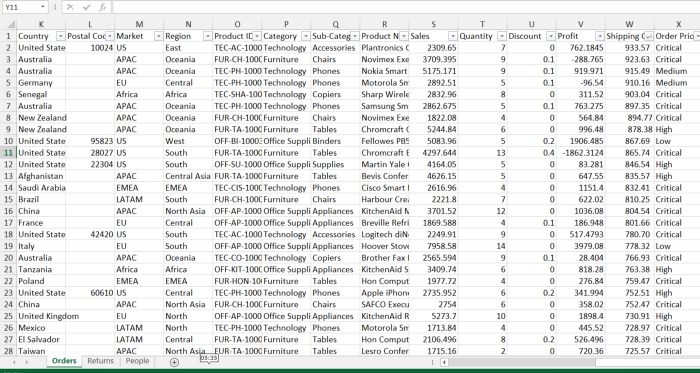
Now we have an excel file and Tableau installed let’s load the data set into Tableau. Tableau also gives us some flexibility to create new columns, rename, split, edit alias, join tables, some preprocessing before loading the data into Tableau. The below image will demonstrate to you how to load data and perform some preprocessing.
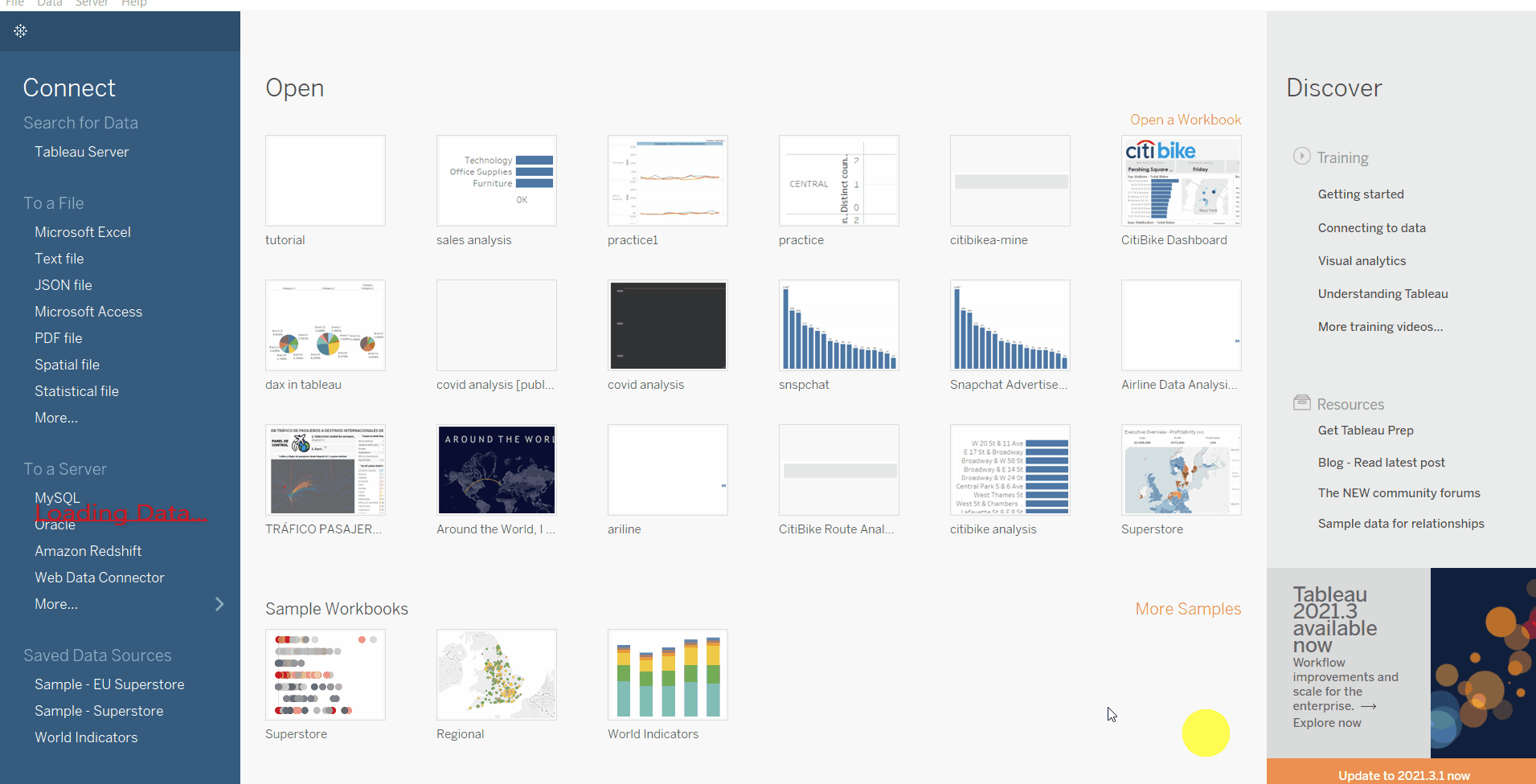
Tableau supports various data formats which can be loaded by choosing those options. Under a file we see various options to load data from the local directory and under to a server, we see options to load data from cloud servers. for loading CSV files we select Text file options, for excel and SQL files we choose their respective options.
Connect Tableau to the data file:
Up until now, we have Tableau loaded with global-superstore data and now we can see Tableau work-page. Tableau work-page consist of different section. Let’s understand them first before plotting our graphs.
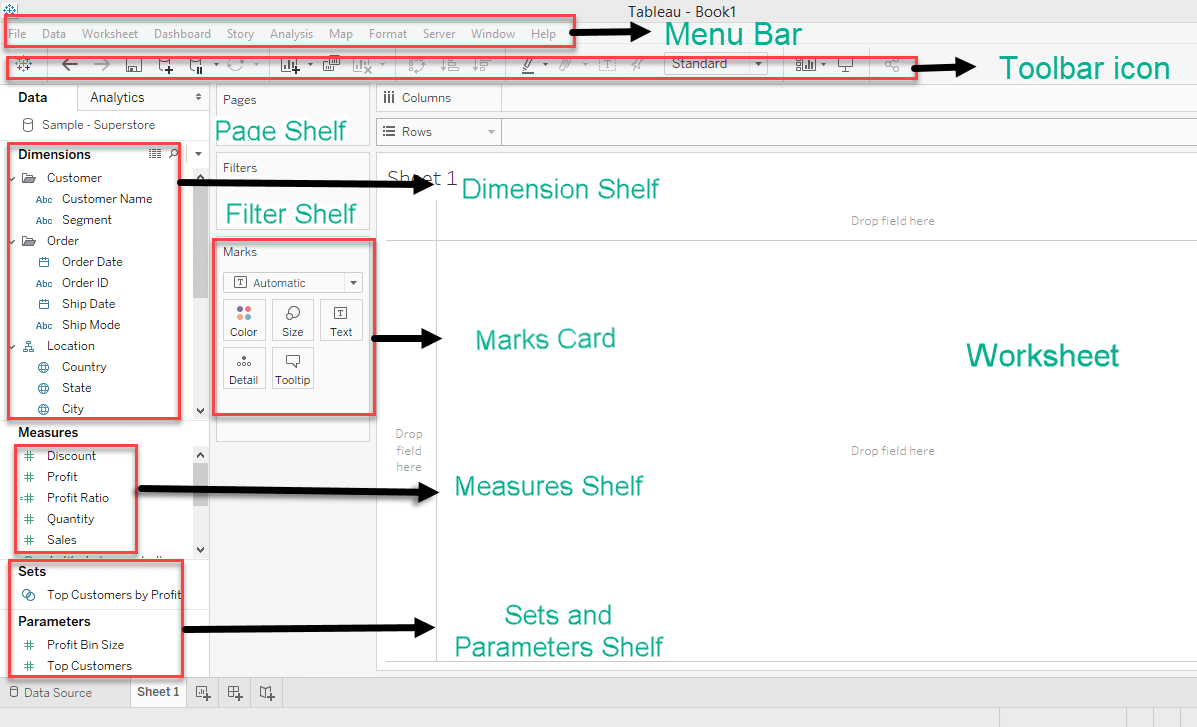
Source: Local
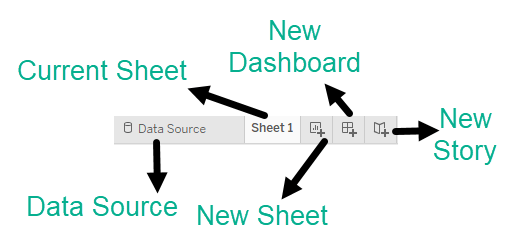
Let’s begin with the real data visualization using Tableau-
Tableau supports the following data types:

button and select whichever graph you want.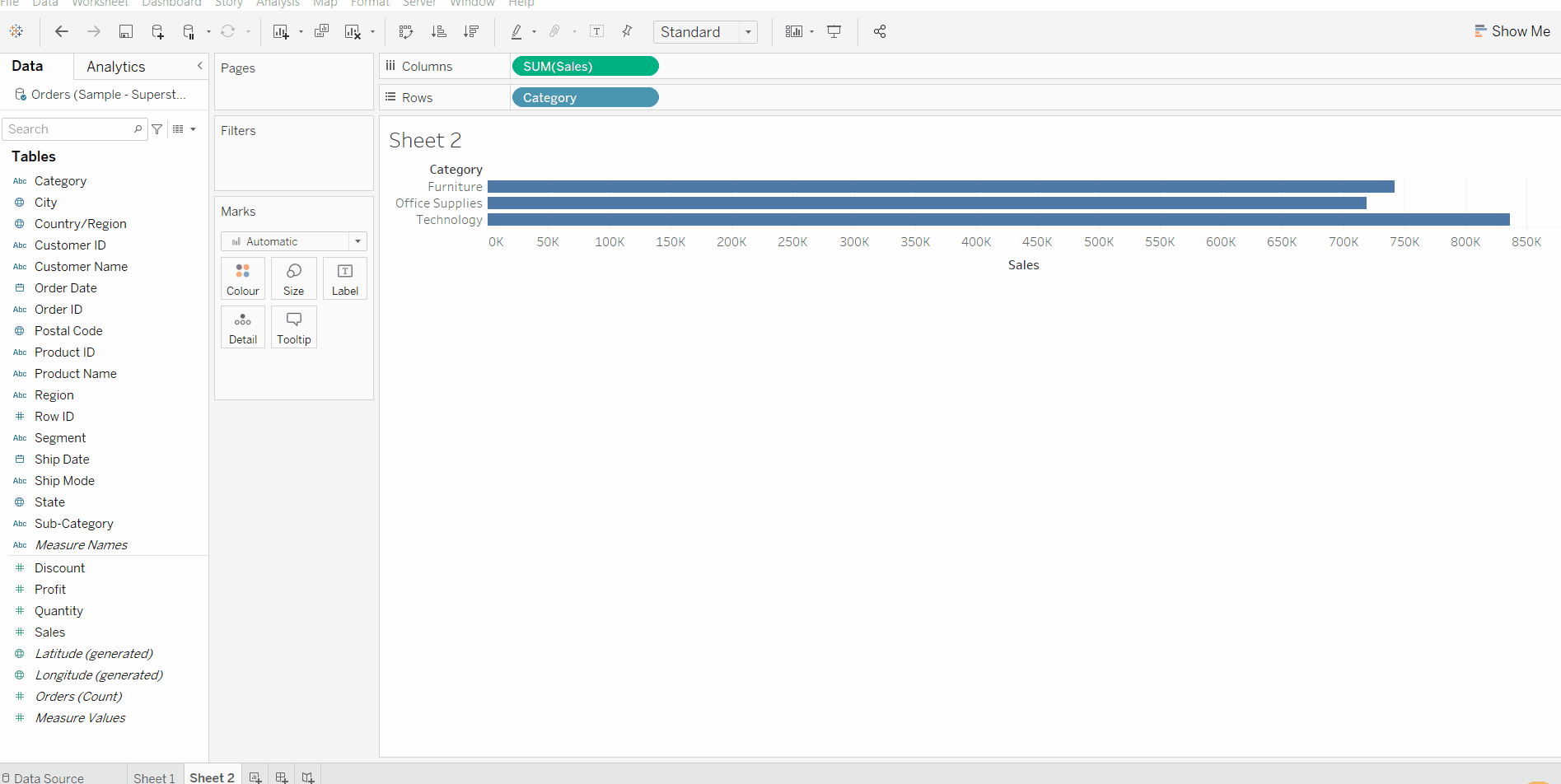
From the above image, you might have observed that the default aggregation on the measure is sum but you can change the aggregation to sum, avg, min, max, etc, you can also customize the axis name, orientation, size, show-hide axis as shown in the above image.
In order to create a beautiful interactive visual, you must understand the following features:
a. Marks card
Marks card is very important for plotting graphs. In marks card we have:
Colour button which is used to give different colors to different categories and measures,
Size button is used to give size which depends on how big a value is. The bigger the value means bigger the size of a particular mark
Label button which is used to show labels to graphs, clicking on the label button throws us some settings where you can set the formatting of labels.
Tooltips, here you can add information like ( profit, quantity, sales, discount, category, state, etc.) which will be visible on hovering over the graph
The Details button allows you to display more information without affecting the table’s structure. which is used to show details about particular points. dragging a field on details buttons will show the details of that point, and this feature is majorly used for maps to show more details of a particular point.

b. Filter
After creating some plots you might want to use different filters, to do so follow these steps:
after selecting the filter you just applied. from the toolbar in order to fit the visualization into the worksheet.c. Hierarchy
You can quickly establish hierarchies with Tableau to keep your data organized.
Hierarchy is basically nesting the same type of related data together. Tableau calendar data is an example of a hierarchy.
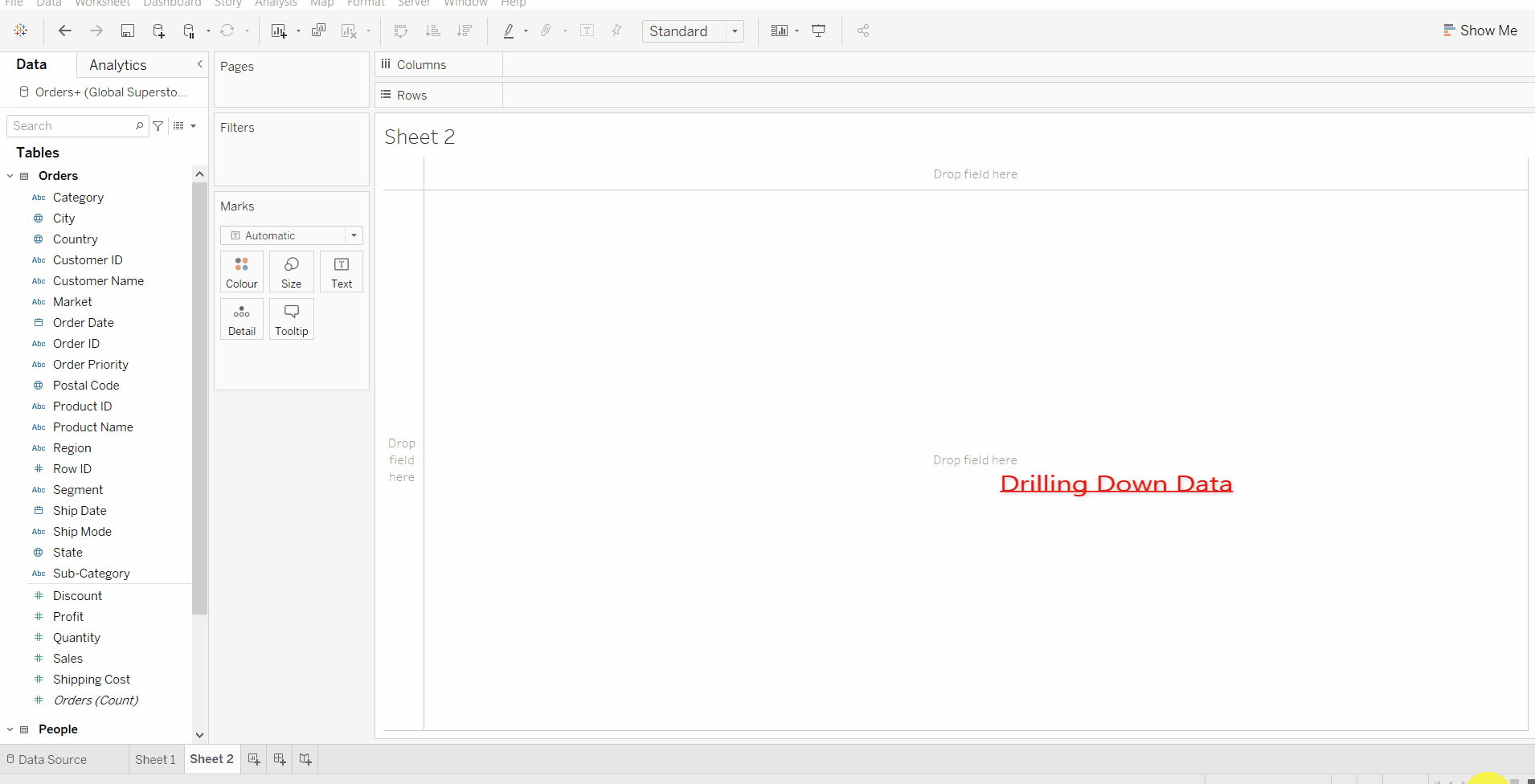
Date-time, calendar is in the form of hierarchy in Tableau, which can be drilled down to year -> quarter ->month -> day by clicking on the “+” button on the features tab,
You also can create your own hierarchy like country -> state -> city -> postal code, just by dragging features to another and when needed clicking on ‘+’ button you can drill down further to city, state, postal code.
d. Parameter
A parameter is a workbook variable like a number, date, or string that can be readily managed by the user to replace a constant value in a calculation.
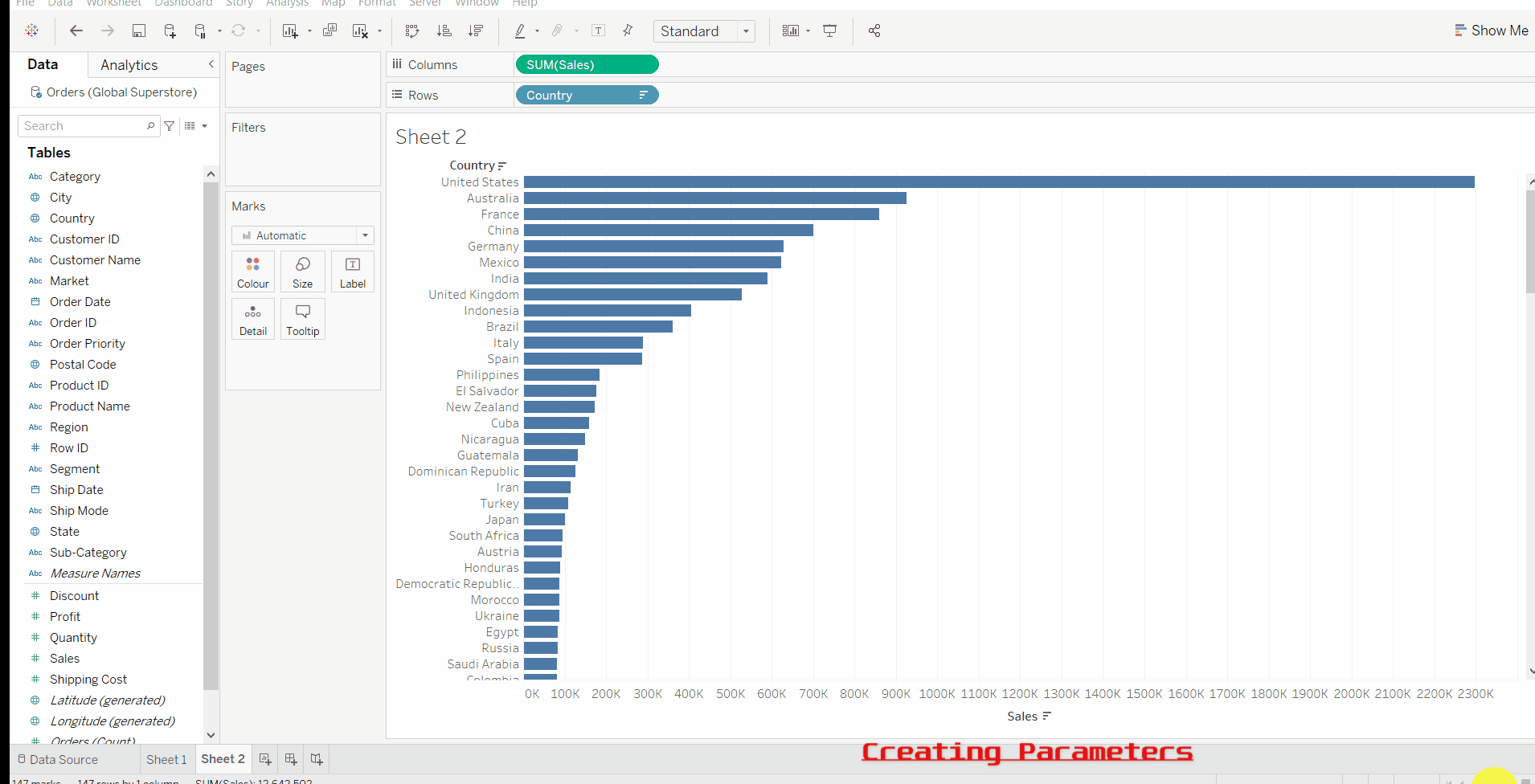
In the above image, our goal was to choose the top N countries having maximum sales but here we wanted to let the user select how many top countries they want to list. To accomplish so, we’ll need to create the following parameters:
range from 1–100 list and the current value will be 5. show parameter will show the parameter with a slider. but it hasn’t yet connected with any working. in by field section and choose SUM(SALES).e . Calculated field
Tableau gives us the option to create a calculated field where we can create our own new field( column). Tableau comes with many functions like if-else, switch, case, date diff, level of dimension which is extensively used for our visualization
In Tableau, select Analysis > Create Calculated Field then we give some rules to create a calculated field and it will create a new field in the data shelf. which we can use by dragging to the axis. more on the calculated field can be read on the link.
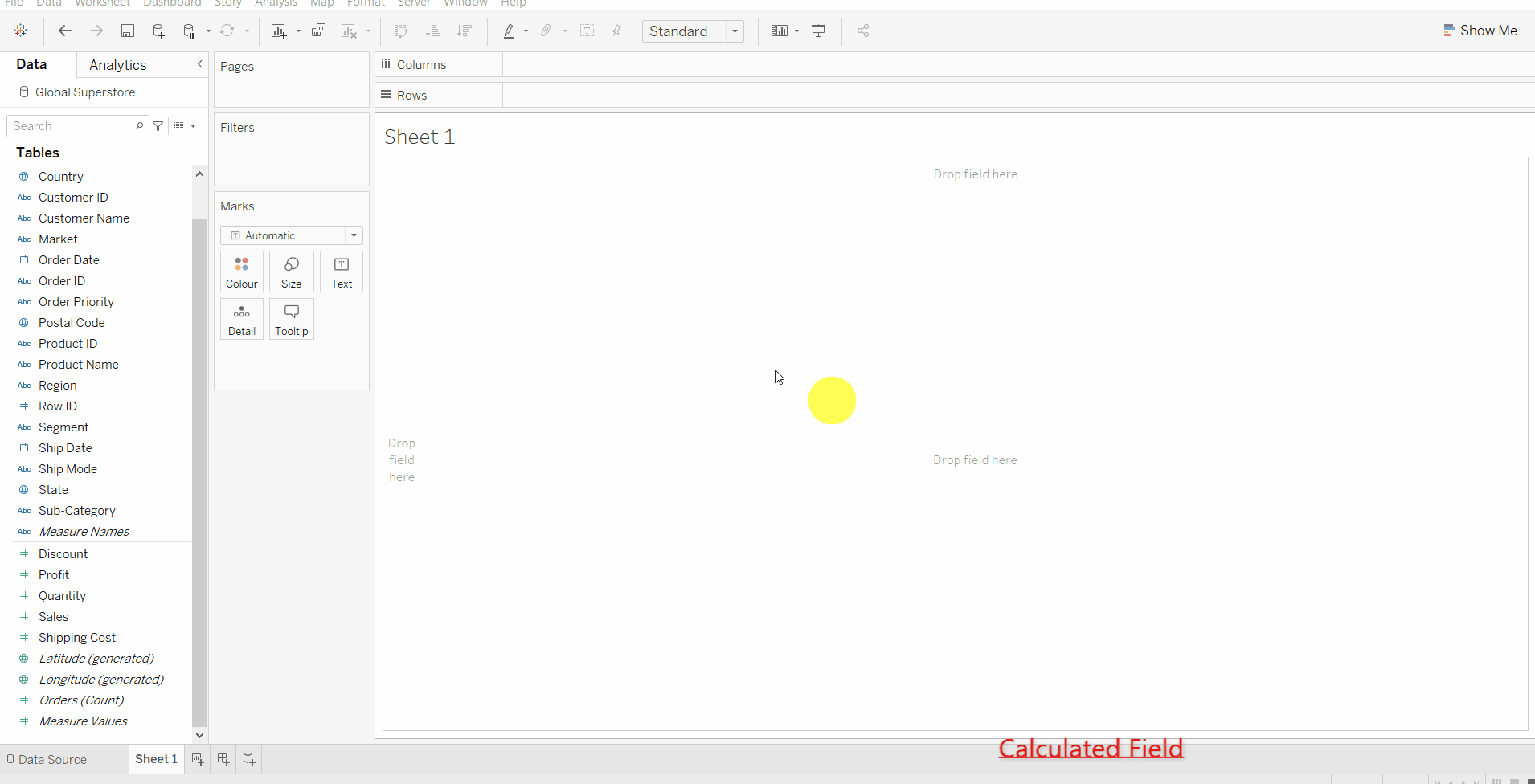
Creating Calculated Field:
Here our goal is to calculate delivery days using order date and ship date:
I would try to write a separate blog on calculated field on Tableau ,
since calculated field is the most powerful features of Tableau.
f. Format
Formatting in Tableau is very easy. Just click on the format button wherever you want to format. we can format text, numbers, percentage, decimals, date-time format, label color, label size, axis line color, worksheet, columns, header, etc . as shown in the above image.
In the Analytics tab, we have several analytical tools like forecasting, clustering, trend line, Average line, constant line, etc. let’s see in action.
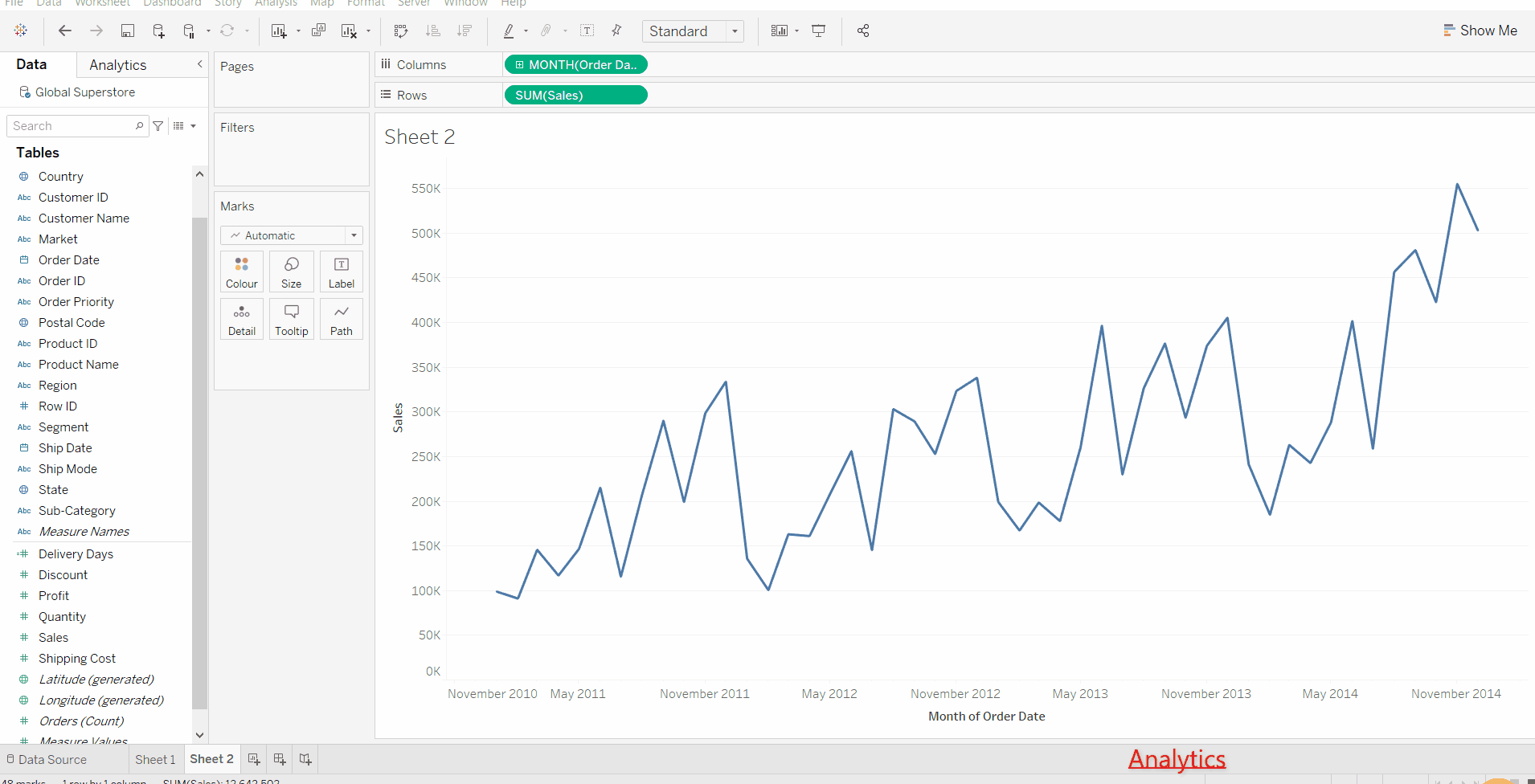
Source: Local
Steps to perform Analytics:
We can easily draw maps in Tableau if we have geographical data aka a location field (country, city, state, etc). Tableau has 2 types of maps, symbol map, filled map.
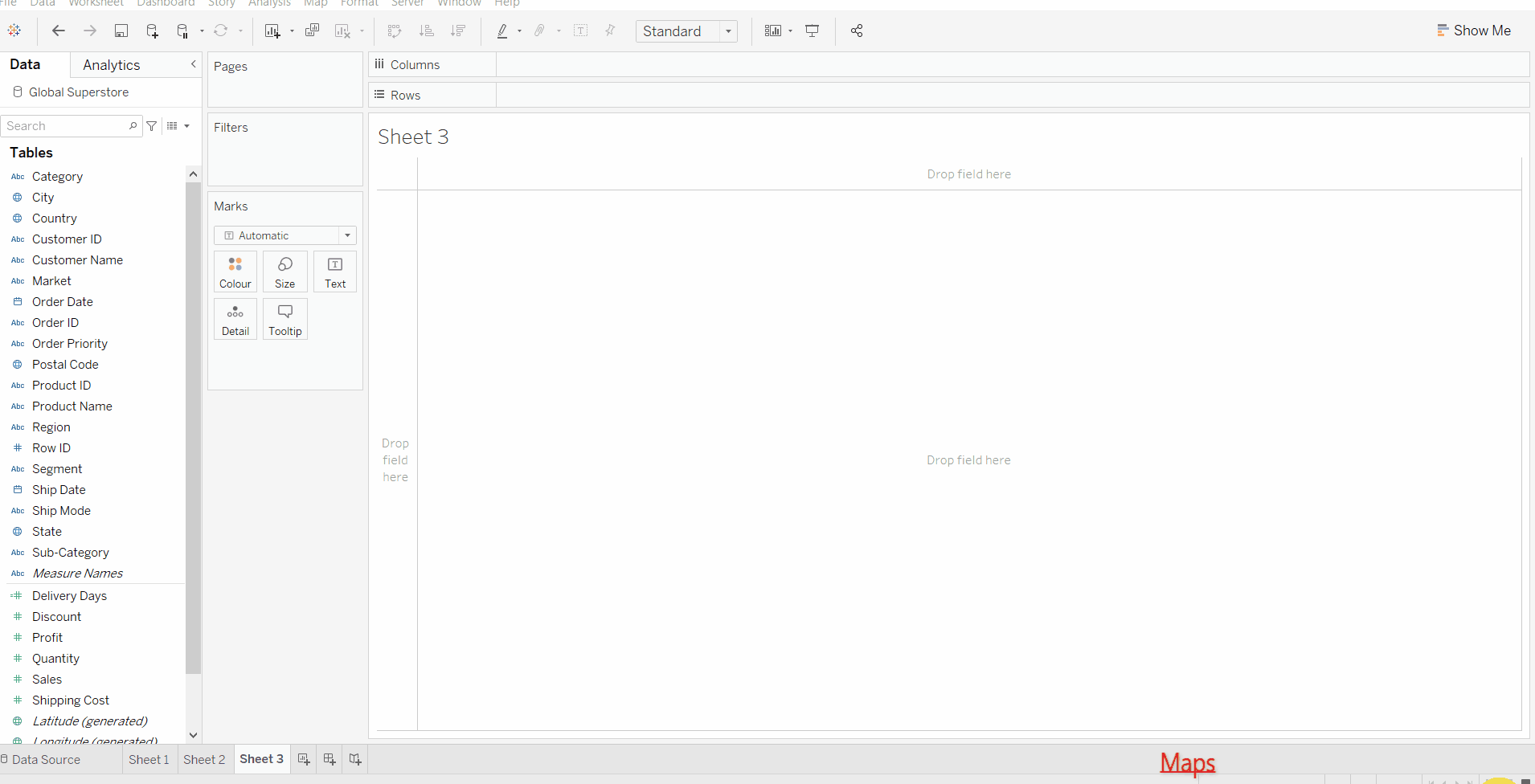
Steps to create Maps:
button. size button from the marks card. the size of points was determined by the magnitude of sales.you can also decide the colors of different states based on the sales amount on the filled map.
If you see unknown
label on map its just because those location were not recognised by Tableau map engine .we can either filter those null locations or we can
sort them by giving their specific country, city , state, pin-code etc.
Colors: You can adjust colors of visualization based on categories and on the magnitude of measure values.
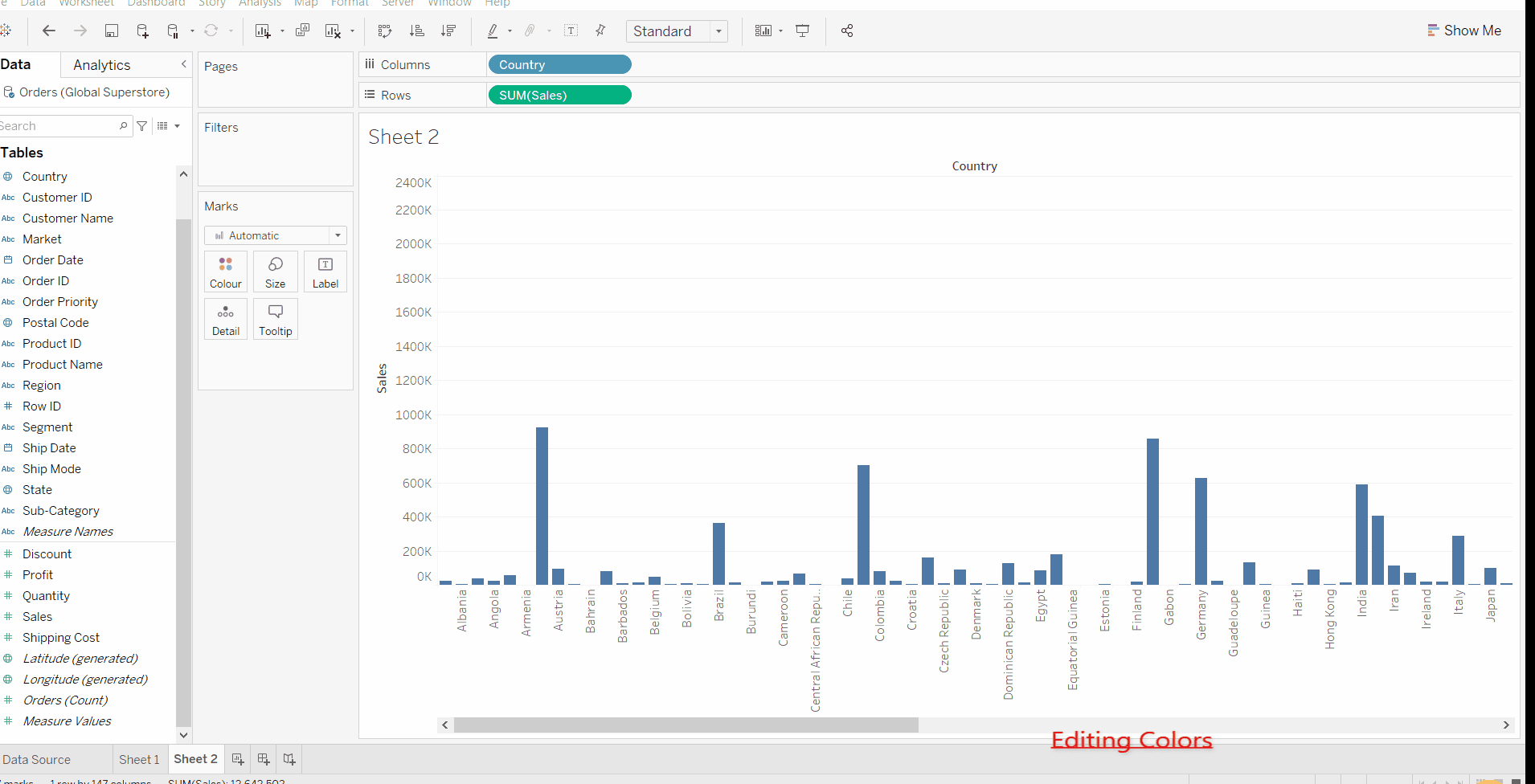
From the above image you see that the color of bars has decided by the profit amount, more profit means more bluish in color, more loss means more reddish in color
adjusting colors is so simple in Tableau:
Tooltip: When we hover over a particular point on the graph we see a box showing up details about that particular point, this is basically a tooltip. we can add information to show as a tooltip, let’s see an example.
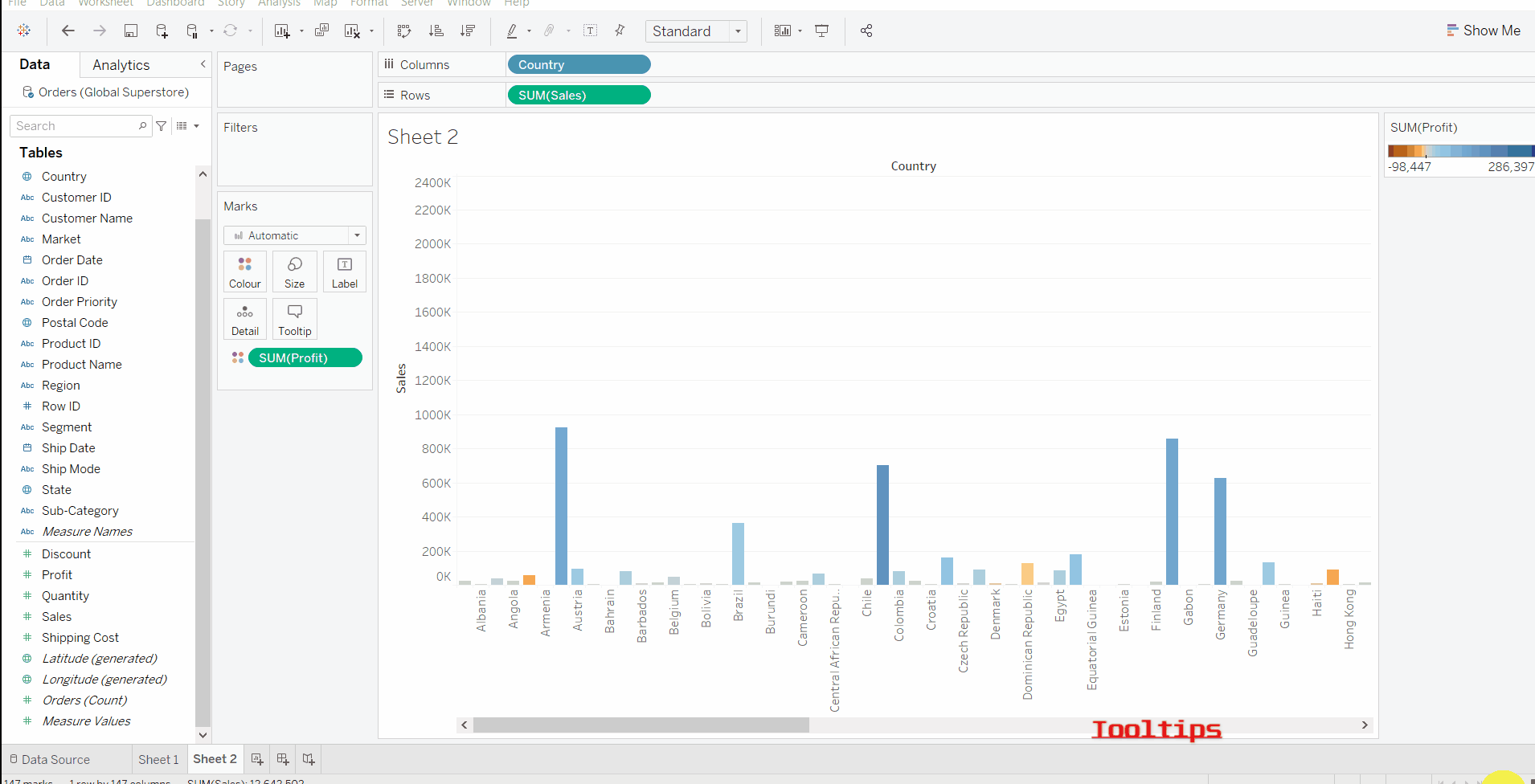
As you can see dragging a field on the Tooltip button adds details in the tooltip which can be seen on hover, we can also customize the text, color, font of the tooltip.
Combining multiple views with filters, interactivity, legends on the same page is simply our dashboard. it helps us to see all views on the same page with fully interactive features. Let’s see an example.
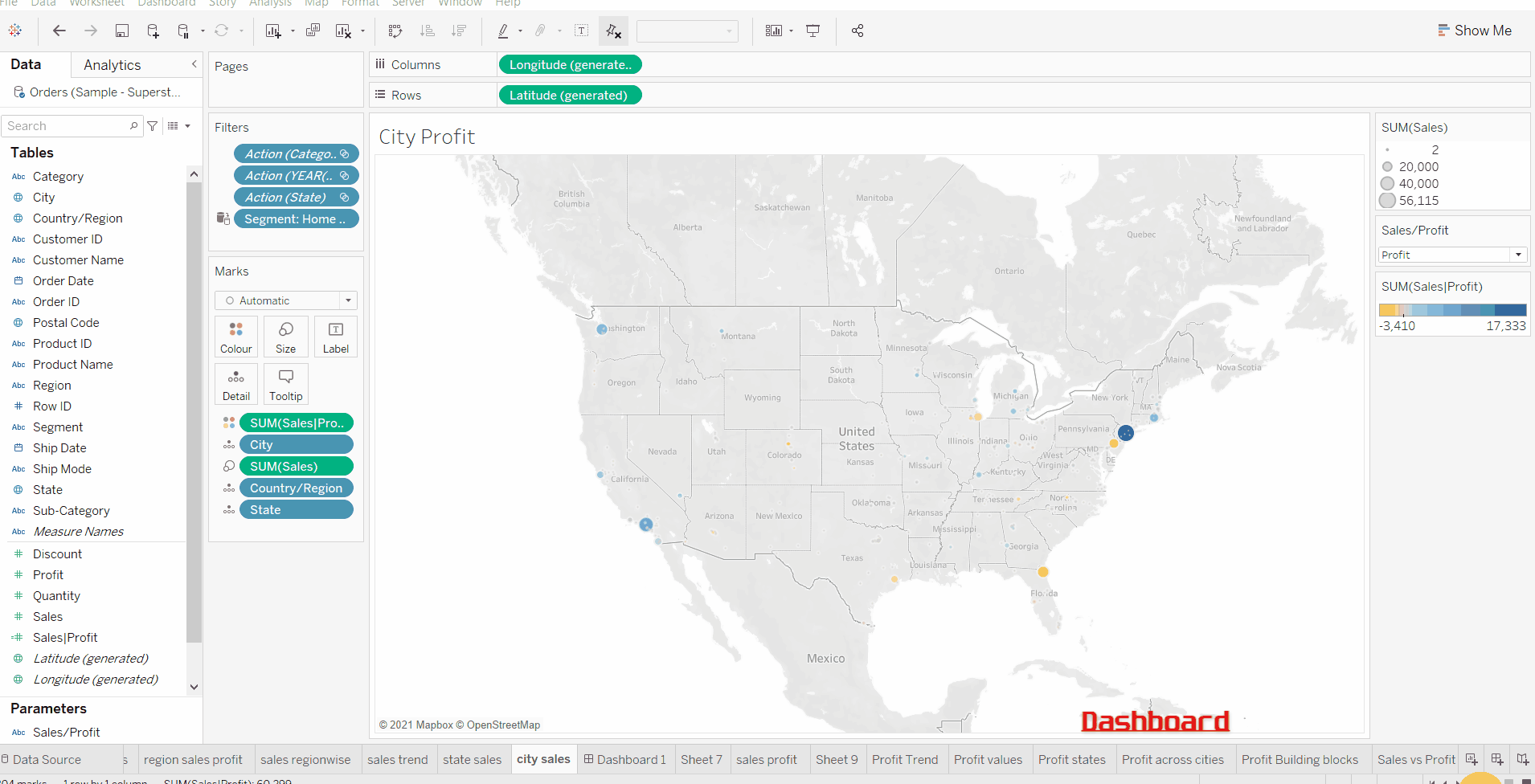
Steps to create a dashboard in Tableau:
You can also apply filters on different visuals present in our dashboard. More information on the dashboard may be found here.
The story in the Tableau is narrated walkthrough of one or more sheets or dashboards. each view in the story is called a Story Point.
In storytelling, we take a visual and write a narration about the insight that has found from visual
Creating a story is the same as creating a dashboard, just drag our visual on the story page and give narration. You can add as many visuals as you want along with narration.

Actually creating story points in Tableau is easy. You can see an example of creating a Story Point and experience Tableau’s free on-demand training at the same time! Go to Tableau’s training page.
Tableau comes with autosave features so you don’t need to worry if you couldn’t save your work manually.
You can save your work in various ways:
Tableau Desktop
To save a Tableau workbook locally, Select File > Save. Specify the workbook file name in the Save Asdialogue box. Tableau saves the file with the .twb extension by default.
Tableau Server
In case the data is confidential and the story needs to be shared with the entire team, Tableau Server comes in handy. Select Server > Publish Workbook or click Share in the toolbar to publish a story to Tableau Server.
Tableau Public
With Tableau Public all the views and data are made public and anybody on the internet has access to it. Select Server > Tableau Public > Save to Tableau Public and give your credentials. before accessing Tableau public you should have a Tableau public account.
Tips:
This is all you need to know about Tableau in order to create good-looking charts and dashboards. I tried to cover as much as I could although it’s not the ending. You can learn more about formatting, calculated field, pages, animation, extensions, etc. in order to go in-depth with Tableau you must practice different kinds of data and it will help you analyze and present data efficiently and in a nice manner. I highly encourage you to go through the free learning material given by Tableau.
Thanks for reading, do share the article if you have learned something new, feel free to comment. See you next time !!! ❤️
Lorem ipsum dolor sit amet, consectetur adipiscing elit,